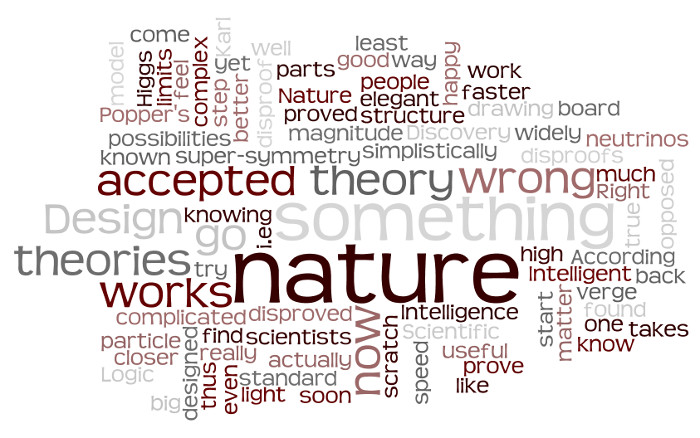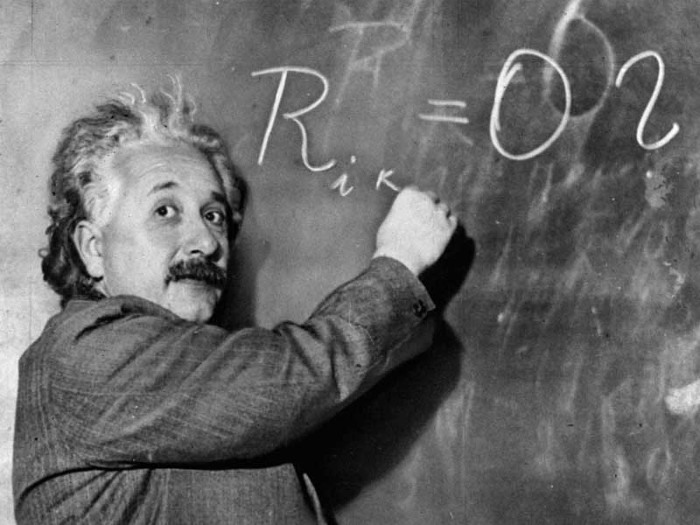6 scientific terms ensure you are still misused in everyday life
If you talk to a scientist, sometimes two people may not understand each other. Part of the reason comes from a lot of scientific terms, when used in common language has a very different meaning.
The term scientific refers to accuracy and consistency, while common language has a lot of flexibility and approximation. And if you want to learn about this difference, here are 6 best examples.

Many scientific terms, when used in common language, have a very different meaning.
1. Theory
In everyday conversations, you often hear someone say this or that is just "theory . " The meaning they imply is that these are less likely to happen and there is no convincing evidence.
However, in science, if someone makes a theory, they are almost at the peak of their career. That's Einstein with Theory of Relativity or Darwinism with Evolutionary Theory.Theory in science is the most reliable, rigorous and comprehensive form of knowledge.
Scientific theory carries a tremendous power. It is used to explain all scientific phenomena in a range or field. A theory can exist for centuries along with the reputation of the person who built it.
You can see after 100 years of Einstein using the theory of general relativity to predict the existence of gravitational waves, scientists really confirm that. This is the power of theory. A theory can go 100 years ahead of experimental science.

When making a theory, scientists reached the peak of their careers.
In science, the process to establish a basic theory will be like this: Scientists observe an unusual phenomenon, unlike anything before. They will come up with hypotheses to explain it. To test the hypothesis, many experiments must be established. Once enough assumptions are made, scientists will string them together.
At this point, a theory is established. But not stopped, it must be accepted by the scientific community. A series of other scientists will proceed to verify it, which normally they prefer to refute rather than build. Until most other scientists agree, the theory as well as the scientists make it will be noted.
In everyday life, many people will mistake the theory of relativity, or the theory of evolution is inaccurate, because scientists call them "theory". At that time, explain to them that theory is a pinnacle of science.
2. Nature

100% from nature does not mean they are good for health.
"Don't worry, they are of natural origin," which is a saying we hear a lot every day. You can know about a food, drink or beauty advertised as "natural". They mean that it does not contain chemical ingredients, good for health.
Even so, the true meaning of "nature" is that everything exists without human intervention . So it's not that everything "nature" is good for you. See arsenic as an example. It is completely present in nature, but is a deadly poison.
Botulinum toxin, also known as Botox, is used in cosmetic surgery. It is even a nerve agent that is ranked among the strongest. So the next time someone advertises a product of natural origin, you can tell yourself: "Still, it's not necessarily healthy."
3. Comets, meteors, meteors and asteroids

These are comets, meteors, meteors or asteroids?
All are flying objects, floating in the universe, right? The problem is that these objects are clearly classified.
Comets and asteroids, both are celestial bodies orbiting our Sun. They are smaller in size than planets, ranging from a diameter of 10 meters to 578km. Both comets and asteroids form the same Solar System, about 4.5 billion years ago.
However, an asteroid is made up of metal or stone materials. Meanwhile, comets formed from ice, rock and dust. If a comet approaches the Sun, its ice will melt and evaporate, leaving a tail behind them.
Shooting stars are streaks of light passing through the sky at night. These are fragments of less than 10m in diameter that are completely burned in the atmosphere. If a celestial body is large enough to not be burned, it hits the surface of the Earth, now call it a meteorite.
4. Fossils

Fossils are not just animal bones.
Different from what you envision, fossils are not just pieces or remains of animal bones. Soft tissue such as skin, blood vessels and traces they leave as footprints, caverns, nests are called fossils.
However, in order to qualify for fossils, the specimen must be more than 10,000 years old. Less than that, they are called fossils.
5. Venom and toxins
A poisonous snake and a poisonous toad. Oh, they are a little different. A toad has a toxin on the skin. While venom must be secreted from a specific part, for example, a snake is a canine.
So it would be strange for someone to say a venomous toad and snake has poison. Are you sure not to confuse these two concepts?
6. Dinosaurs

Pterodactyl is a winged lizard, not a flying dinosaur.
"I love flying dinosaurs very much." Wrong! Many people do not know dinosaurs only mention the ancient reptile that lives on the ground. They do not include flying species, such as Pterodactyl, or living underwater like Plesiosaurus.
And do you think dinosaurs are extinct without leaving descendants? Wrong again. Look out the window, where you will see all the birds today, they share an ancestor with dinosaurs. So if humans are counted as a species of primates, birds are a kind of dinosaur.
So what do you call those flying? Is it a lizard.
- 10 devices are highly appreciated in terms of ideas
- Typical misconceptions in life through scientific
- Need to review the Nobel Prize?
- Video: The inventions will make your life easier
- Future breakthroughs
- How many everyday substances?
- Decipher the mysteries that exist in every person's life that few people pay attention to
- Life of wasps
- Tragedy of those who suffer from the 5 most strange allergies on the planet
- 3 everyday items you won't believe are from ancient Egypt
- Decode everyday science mysteries
- Prof. Ngo Bao Chau: 'Science has no place for deception'
 'Fine laughs' - Scary and painful torture in ancient times
'Fine laughs' - Scary and painful torture in ancient times The sequence of numbers 142857 of the Egyptian pyramids is known as the strangest number in the world - Why?
The sequence of numbers 142857 of the Egyptian pyramids is known as the strangest number in the world - Why? History of the iron
History of the iron What is alum?
What is alum?